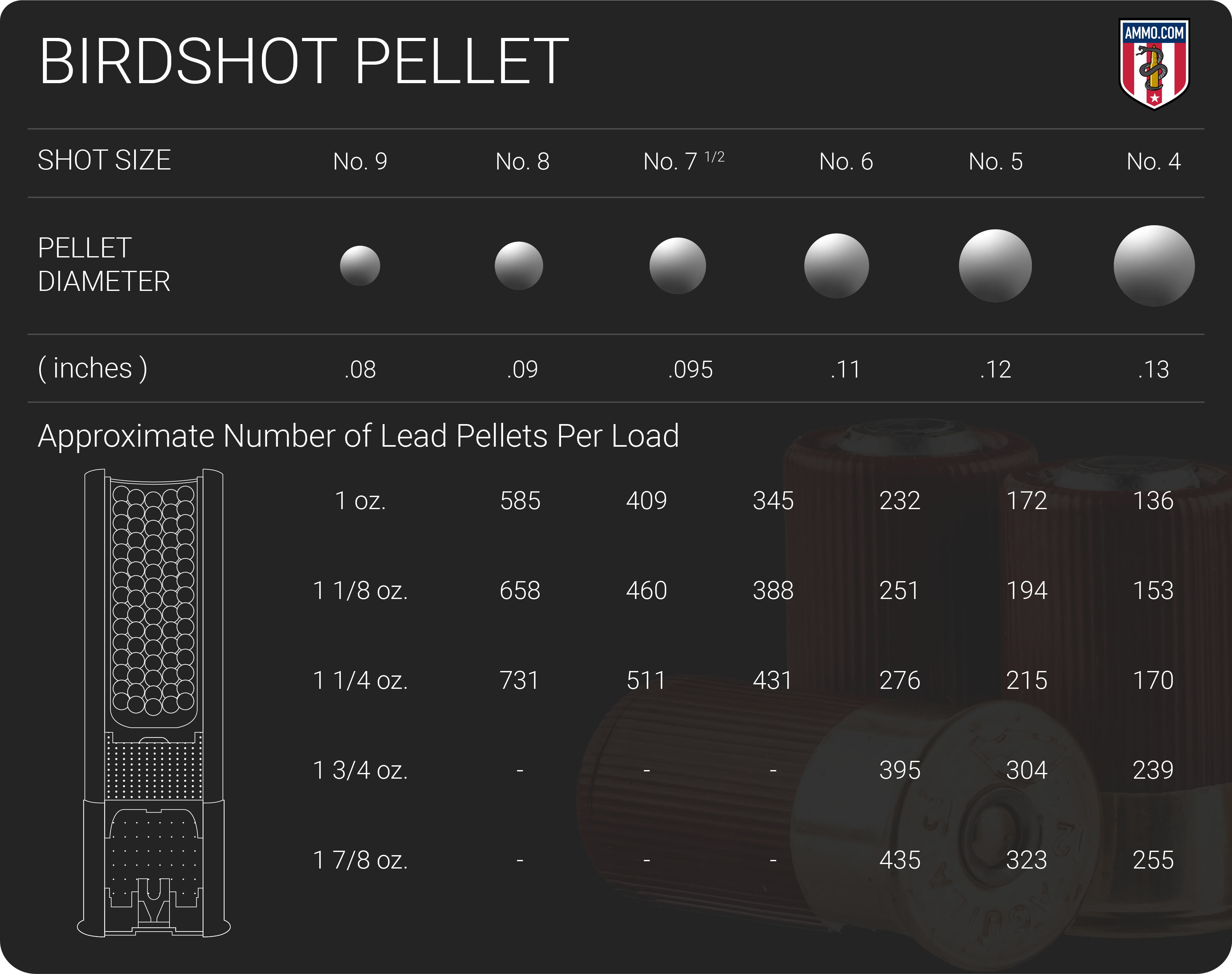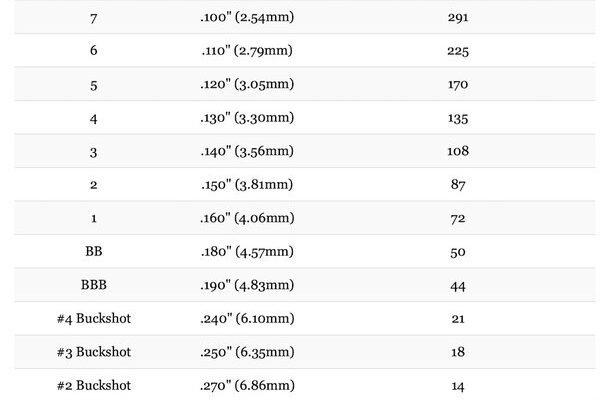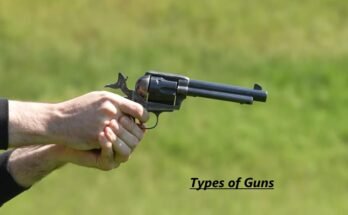Have you ever found yourself curious about the specifics of a 12-gauge birdshot shell? You’re not alone.
Understanding the details of your ammunition can make a significant difference, whether you’re hunting, participating in shooting sports, or just aiming for a deeper knowledge of your gear. You’ll discover exactly how many pellets are packed into a 12-gauge birdshot shell.
But that’s not all. We’ll also explore why this number matters to you, affecting everything from your shooting precision to the success of your outdoor adventures. Stick around, because unlocking this information could transform the way you approach your next shot.
Basics Of 12-gauge Birdshot
Understanding the basics of 12-gauge birdshot is crucial for hunters. Birdshot is designed for hunting small game and birds. It’s popular for its effectiveness and versatility. This ammunition type is widely used due to its reliable performance.
What Is A 12-gauge Birdshot?
A 12-gauge birdshot refers to the size of the shotgun shell. The gauge indicates the shell’s diameter. A 12-gauge shell is larger than a 20-gauge shell. Birdshot contains numerous small pellets. These pellets spread upon firing, increasing the chance of hitting small targets.
Components Of Birdshot Pellets
Birdshot pellets are made of lead or steel. Lead pellets are more common due to their density. Steel pellets are often used for environmental reasons. These pellets are round and small. Their size varies, affecting the spread and impact.
Pellet Count In 12-gauge Birdshot
The pellet count depends on the shell’s shot size. Smaller shot sizes have more pellets. A typical 12-gauge shell can contain hundreds of pellets. For example, a 9 shot has around 585 pellets. A 7.5 shot has approximately 350 pellets.
Effectiveness In Hunting
Birdshot is effective for hunting birds and small game. The spread of pellets covers a wide area. This increases the likelihood of a successful hit. It’s ideal for moving targets. Hunters prefer it for its accuracy and efficiency.
Choosing the right birdshot involves considering game size. Smaller game requires smaller pellets. Larger game needs larger pellets. Shot size affects the spread and impact. Selecting the right shot size ensures successful hunting.

Types Of Birdshot Pellets
The world of birdshot pellets is diverse and fascinating. Understanding the types can enhance your hunting experience. Different pellets are designed for specific purposes. Let’s explore the common types.
Lead Pellets
Lead pellets are widely used in birdshot. They offer excellent density and penetration. Lead is a traditional choice for hunters. It provides consistent results in various conditions.
Steel Pellets
Steel pellets are an eco-friendly alternative. They are less dense than lead but still effective. Steel is often used in areas with strict regulations. It is a safe option for the environment.
Bismuth Pellets
Bismuth pellets are a premium choice. They are dense and non-toxic. Bismuth is perfect for waterfowl hunting. It offers performance similar to lead.
Tungsten Pellets
Tungsten pellets are known for their high density. They deliver superior penetration and range. Tungsten is ideal for long-distance shooting. It is a preferred choice for experienced hunters.
Factors Influencing Pellet Count
Pellet count in a 12-gauge birdshot depends on shot size and shell type. Smaller shot sizes have more pellets. Shell length also influences the total pellet count.
Understanding how many pellets are in a 12-gauge birdshot is more than just a numbers game. Various factors can influence the pellet count, making it a bit more complex than you might initially think. Let’s dive into these factors and see how they affect your shooting experience.Shot Size Variations
Shot size plays a crucial role in determining the number of pellets in a shell. Smaller shot sizes, like 9, can have hundreds of tiny pellets. Meanwhile, larger sizes like 4 contain fewer but larger pellets. Have you ever tried shooting with different shot sizes? It’s surprising how the feel and spread pattern change. Choosing the right shot size can make a difference in your hunting success.Shell Length Considerations
The length of the shell also affects the pellet count. A 2¾-inch shell holds fewer pellets compared to a 3-inch or 3½-inch shell. Longer shells have more room, allowing them to pack in more pellets. Next time you’re at the store, check the shell length on the packaging. You might find that the extra length provides the edge you need for certain hunting conditions.Manufacturing Differences
Manufacturers have their own methods and standards, leading to variations in pellet count. Some brands might compress the pellets tighter, while others focus on a more consistent spread. This can lead to slight differences even in shells labeled as the same size. Have you ever noticed differences between brands? It’s always a good idea to test a few to find which one suits your style best. You might discover a brand that gives you that perfect shot every time. Understanding these factors can help you make smarter choices for your shooting needs. What else have you discovered about shell variations? Share your insights in the comments!Common Pellet Counts In Birdshot
A 12-gauge birdshot typically contains between 200 to 400 tiny pellets. The exact number varies by manufacturer. These pellets are used for hunting small game and bird hunting.
Understanding the Common Pellet Counts in Birdshot can transform your shooting experience, especially if you’re new to shotgun sports or hunting. Imagine being on a hunt, ready to take that perfect shot, only to wonder if your 12-gauge birdshot will spread just right. Knowing how many pellets you’re working with can help you predict the shot pattern, ensuring you make informed decisions.Standard Pellet Ranges
The pellet count in a 12-gauge birdshot varies based on the shot size. Shot sizes are typically represented by numbers, with smaller numbers indicating larger pellets. For example, a 7.5 shot can have around 350-410 pellets per ounce. Meanwhile, a 9 shot might pack in as many as 585 pellets per ounce. This variability provides you with choices depending on your specific needs, whether it’s for close-range pest control or longer-range bird hunting.Popular Shot Sizes And Counts
You might wonder why some hunters prefer 6 shot while others swear by 8. It boils down to pellet size and count. A 6 shot, which might be used for larger birds, contains roughly 225 pellets per ounce. These larger pellets deliver more energy, crucial for bringing down bigger game. On the other hand, a 8 shot, commonly used for clay shooting or smaller birds, can have about 410 pellets per ounce. The higher pellet count increases your chances of hitting fast-moving targets due to a denser spread. Next time you prepare for an outing, consider what you’re aiming for. Ask yourself: Do you need more pellets for a wider spread or fewer, larger pellets for impact? Understanding these counts can enhance your accuracy and success in the field. By recognizing these differences, you tailor your choice of birdshot not just to the game, but also to your shooting style and preference.Performance Implications Of Pellet Count
The pellet count in a 12-gauge birdshot affects performance significantly. Typically, it contains between 200 to 400 pellets. More pellets mean a wider spread, ideal for hitting fast-moving targets like birds.
Performance Implications of Pellet Count When you pull the trigger on your 12-gauge birdshot, the number of pellets packed inside can significantly affect performance. It’s not just about hitting the target; it’s about how effectively you hit it. From the spread of your shot to how deep each pellet penetrates, knowing your pellet count can make a world of difference.Impact On Spread
More pellets usually mean a wider spread. This can be an advantage or a drawback depending on your situation. A wider spread increases your chances of hitting a fast-moving bird, but it can also result in a less concentrated impact, reducing effectiveness. Imagine a time when you aimed at a flock and only one or two birds dropped. A high pellet count might have improved your chances, but only if the spread was still contained enough to ensure a solid hit. Would a tighter spread have changed the outcome?Effect On Target Penetration
Pellet count also affects how deeply each pellet penetrates the target. Fewer pellets mean each one carries more power, potentially piercing deeper. More pellets can mean less penetration per pellet, which might not be ideal for tougher targets. Think about a hunting trip where you aimed at a larger bird and the pellets just didn’t seem to reach vital areas. A lower pellet count with deeper penetration could have been the game-changer. Have you considered how penetration could affect your next hunt? Understanding these dynamics helps you choose the right ammunition for your needs. Next time you’re picking your birdshot, remember: the pellet count is more than just a number—it’s a key factor in your shooting performance.Choosing The Right Birdshot
A 12-gauge birdshot typically contains around 200 to 300 pellets. The pellet count varies based on the shot size. Smaller shot sizes have more pellets, while larger ones have fewer.
Choosing the right birdshot for your 12-gauge shotgun can significantly impact your shooting experience. Whether you’re an avid hunter or enjoy recreational shooting, understanding the number of pellets in different birdshot sizes helps you make informed decisions. You want to ensure your ammunition aligns with your specific needs and preferences. Let’s explore how you can select the most suitable birdshot for various applications.Hunting Applications
Different birdshot sizes are designed for various hunting scenarios. If you’re targeting small game like quail, a birdshot with a higher pellet count, such as size 7.5 or 8, is ideal. These sizes offer a denser spread, increasing your chances of a successful hit on smaller targets. On the other hand, hunting larger birds like pheasants might require fewer, larger pellets, such as size 4 or 5, to ensure enough impact. Reflect on your hunting environment and the type of game you’re pursuing. The right birdshot can enhance your effectiveness and conservation efforts.Sporting And Recreational Use
When engaging in sporting or recreational shooting, such as trap or skeet, consistency is key. Here, birdshot sizes like 7.5 or 8 are popular choices due to their balanced spread and pellet count. These sizes provide a consistent pattern, making them perfect for hitting clay targets. Think about how often you participate in shooting sports and your skill level. Choosing birdshot that matches your style can increase your enjoyment and improve your performance. Have you ever missed a clay target because of inconsistent shot patterns? Choosing the right birdshot can change that. Your choice in birdshot affects not only your success but also your overall shooting experience. So next time you’re at the store, consider the different pellet counts and sizes. Make a choice that suits your purpose, whether you’re heading out to hunt or enjoying a day at the range.Safety And Handling Tips
A 12-gauge birdshot shell contains around 200 to 500 tiny pellets. Their number varies by shell type. Proper handling is crucial to ensure safety during use.
When handling a 12-gauge birdshot, safety is paramount. Whether you’re a seasoned hunter or a weekend hobbyist, understanding how to safely handle your ammunition is crucial. Mishandling can lead to accidents, injuries, or worse. You wouldn’t want your day of fun to turn into a nightmare, right? Let’s dive into some essential safety tips that can make your shooting experience both enjoyable and safe.Check Your Equipment Regularly
Your shotgun and ammunition should be in top condition. Regular checks for wear and tear are essential. A faulty gun or compromised ammo can be dangerous. Have you ever skipped equipment checks and regretted it later? Don’t let that happen with your shooting gear.Understand Your Ammunition
Knowing how many pellets are in a 12-gauge birdshot can impact your shooting precision. Each shell has its own specification. Familiarize yourself with the type and number of pellets. This knowledge isn’t just for safety; it’s for improving your skill.Proper Loading Techniques
Loading your shotgun correctly is a basic yet vital skill. Incorrect loading can jam your gun or worse, cause an accidental discharge. Practice makes perfect. Have you ever struggled with loading? It’s worth getting it right every time.Maintain A Safe Distance
Always keep a safe distance between you and your target. Shooting too close can lead to dangerous ricochets. Consider the environment and potential hazards. Do you always check your surroundings before shooting?Wear Protective Gear
Protective gear isn’t optional; it’s a necessity. Always wear eye and ear protection. The noise and debris from shooting can cause permanent damage. Have you ever shot without gear and felt the aftermath?Educate Yourself Continuously
Safety tips evolve as technology advances. Stay updated with the latest safety practices. Training courses and workshops can offer new insights. Are you making the most of available resources to stay safe?Communicate With Fellow Shooters
Clear communication with those around you can prevent accidents. Discuss safety protocols before starting. Everyone should be aware of the plan and location of others. How often do you discuss safety with your shooting group?Handle Misfires Properly
Misfires can happen, but handling them poorly can escalate the situation. Keep the gun pointed in a safe direction and wait before unloading. Have you ever faced a misfire? Knowing the right steps can make a difference. Remember, safety isn’t just a rule; it’s a mindset. Every precaution you take adds to your experience. So, what’s your next step to ensure a safe shooting session?
Frequently Asked Questions
What Is A 12-gauge Birdshot?
A 12-gauge birdshot is ammunition used in shotguns, designed for hunting birds. It features small pellets that spread upon firing, increasing the likelihood of hitting flying targets.
How Many Pellets In A Birdshot Shell?
A 12-gauge birdshot shell typically contains between 200 and 400 pellets. The exact number depends on the pellet size, with smaller pellets allowing for higher quantities.
Why Choose 12-gauge For Bird Hunting?
The 12-gauge offers a good balance of power and coverage. It provides sufficient range and spread, enhancing the chances of hitting fast-moving birds effectively.
What Affects Pellet Count In Birdshot?
Pellet count varies with shell size and pellet diameter. Larger pellets result in fewer pellets per shell, while smaller pellets increase the count significantly.
Conclusion
Understanding 12-gauge birdshot pellets is crucial for hunters. Each shell varies. Factors like pellet size impact effectiveness. Smaller pellets mean more in a shell. Larger pellets have fewer. Knowing the count helps choose the right ammo. It influences hunting success.
Different brands offer different counts. Always check packaging. This ensures you pick the right load. Experiment with types to find your perfect fit. Knowledge improves shooting precision. Better accuracy means more successful hunts. Remember, practice makes perfect. Invest time in learning about your ammunition.
It pays off in the field. Happy hunting!



